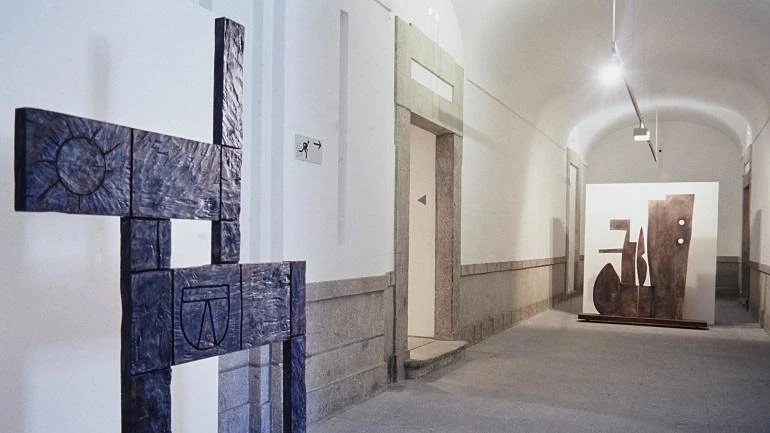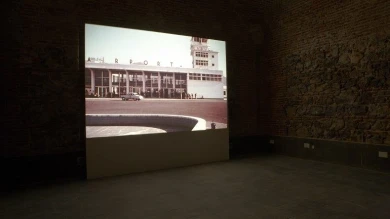La Escuela del Sur. El taller Torres-García y su legado

The exhibition is organised into three parts: the first is dedicated to the Association of Constructive Art, the first step towards the Latin American abstract art project and the moment when it launches its definition of "absolute realism", a concept that refers to those paintings whose components have been reduced to their basic elements of colour plane and line.
The second part is occupied by the Torres-García Workshop, which was created in 1943 on a dual model: medieval craft guilds and modern art schools such as De Stijl, Bauhaus and Black Mountain Collage, although he rejects the introduction of technology and industrial purposes defended by the latter ones. His workshop is born with a vocational interdisciplinary nature; it intended to break the structures of hierarchies between design, craft and art. From inside his workshop and working with experimentations and carried by his motto: "Art should be the product of a period and a particular geography," Torres-García has as an objective the establishment of a unifying artistic language for the continent, he considers that the colonial period of Latin American art has ended and a new artistic era should begin. At the same time he develops his theories on social function and the role of modern art on the continent and develops his ideas about abstraction. He argues that the goal of the artist is to create "absolute artistic value" in his work, that is: a living work of art, which exists by itself independent of the model.
The third part of the exhibition is dedicated to the legacy of the Uruguayan painter in Latin American art. The successful reception of his artistic philosophy is due to its dissemination which he does through his radio programmes, workshop expositions in different countries and the publishing of in his book 1944 Universalismo constructivo. But also, in the words of Maria Carmen Ramirez, because "Torres Garcia offered his students an alternative to social realism nationalist movements like Mexican muralism, by using an abstract language that is rooted in experience and Latin American tradition."
Artists
Archer M. Huntington Art Gallery, Austin, Texas (September - December, 1991); Museo de Monterrey, Mexico (January - March, 1992); Art Museum of the Americas, OAS, Washington, DC (June - August, 1992); The Bronx Museum of the Arts, New York (September, 1992 - January, 1993); Museo Rufino Tamayo, Mexico City (February - May, 1993)
Organised by
Museo Nacional Centro de Arte Reina Sofía and Sociedad Estatal Quinto Centenario
Image gallery

Itinerary
Museo Nacional Centro de Arte Reina Sofía, Madrid
18 June, 1991 - 12 August, 1991
Archer M. Huntington Art Gallery, Austin, Texas
1 September, 1991 - 1 December, 1991
Museo de Arte Contemporáneo de Monterrey, México
1 January, 1992 - 1 March, 1992
Art Museum of the Americas, Washington, DC
1 June, 1992 - 1 August, 1992
Bronx Museum of the Arts, Nueva York
1 September, 1992 - 1 January, 1993
Museo Tamayo Arte Contemporáneo, México
1 February, 1993 - 1 May, 1993

